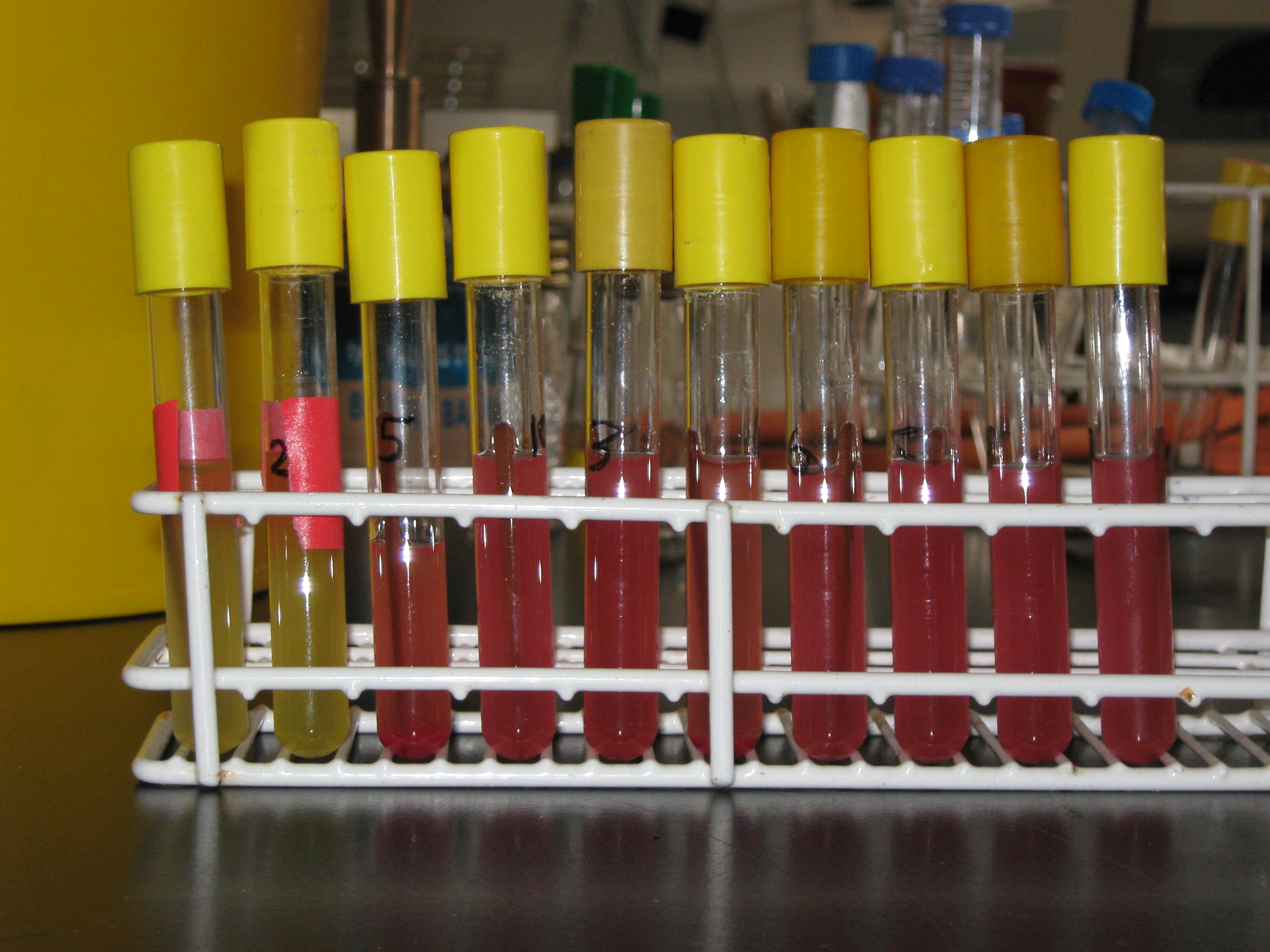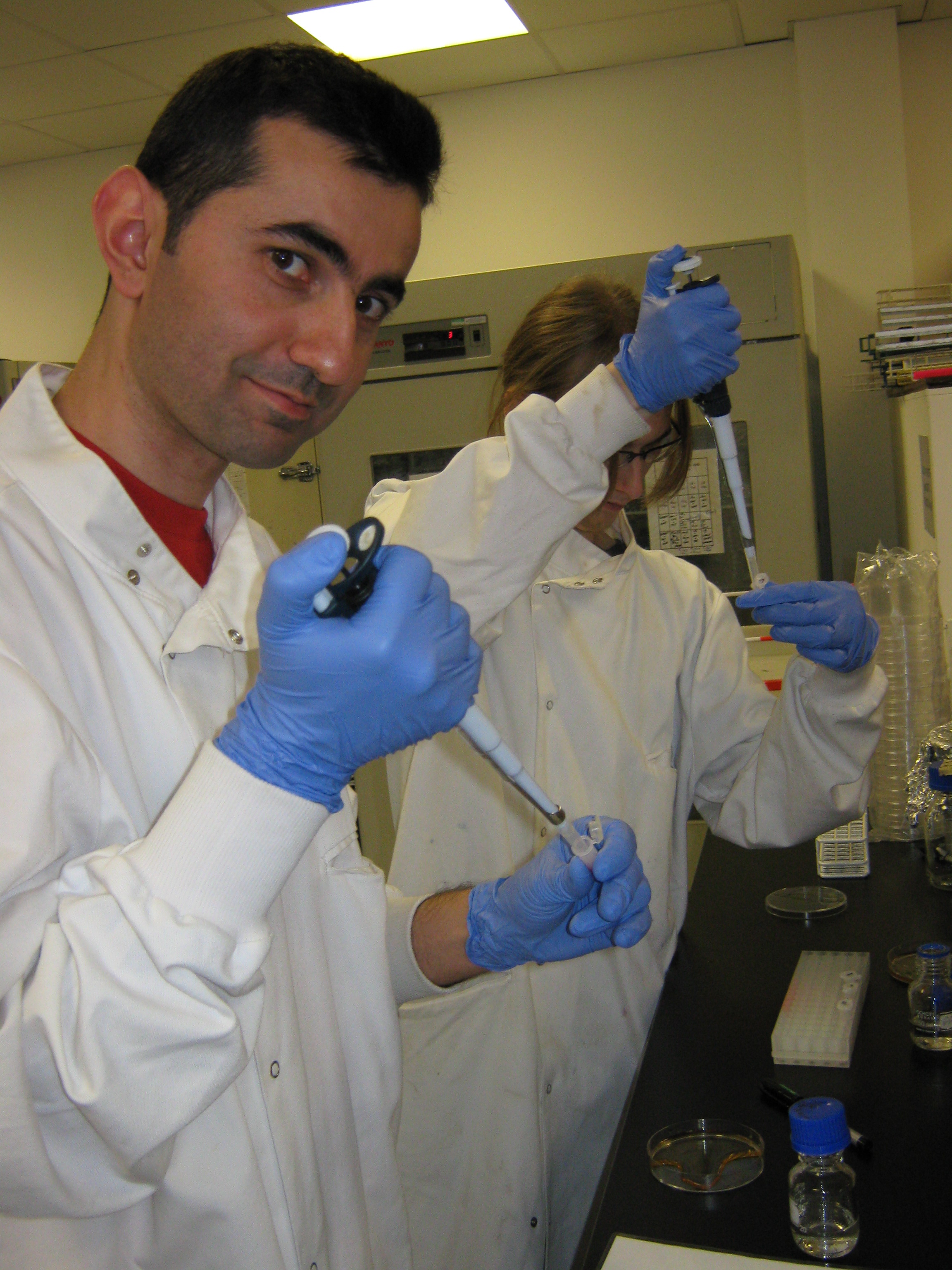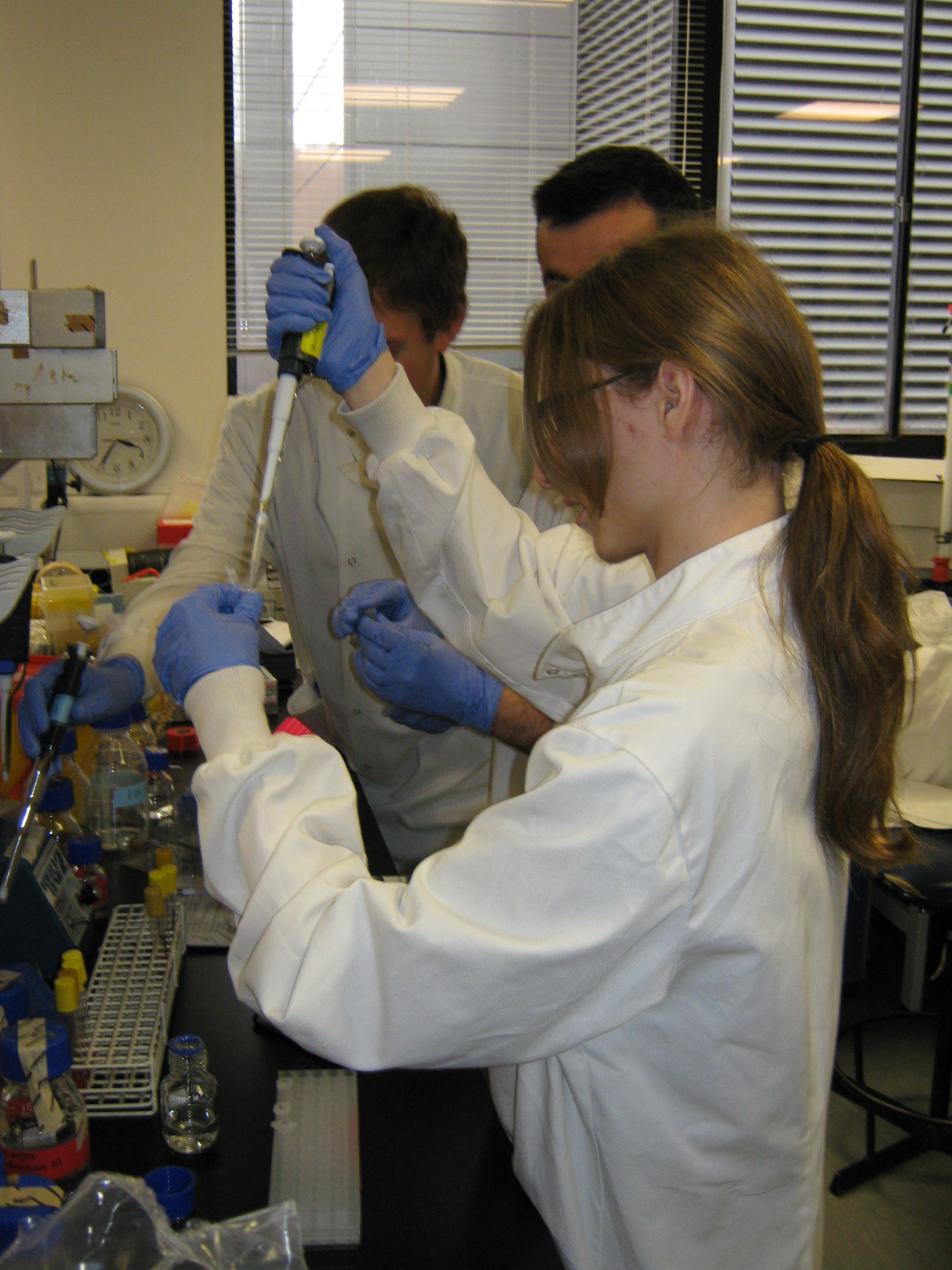Team:Newcastle/IntroductoryLabwork/8 July 2009
From 2009.igem.org
Introductory Lab Session: 8th July 2009
Experiment Recap
In summary, our team have attempted to transform E.coli with three BioBricks - BBa_J04450 (with plasmid pSB1AK3), BBa_I13522 (with plasmid pSB1AK3) and BBa_J04450 (with plasmid PSB1AT3). The cells were cultured on ampicillin-covered agar plates overnight after being treated with both the BioBrick DNA and the competence inducer calcium chloride. Only 10 colonies emerged on the ampicillin-covered plates - 2 cultures transformed with BioBrick BBa_I13522 and 8 cultures transformed with BioBrick BBa_J04450.
These cultures were then placed in some nutrient broth and left overnight to replicate and amplify the plasmid concentration. Today, we will process these cultures of cells by extracting and purifying the plasmid DNA - this will then be used in DNA electrophoresis to confirm that the DNA inherited by the ampicillin resistant bacteria are the BioBricks we inserted.
Observations

The above image shows the appearance of the 10 tubes after a night of incubation in the shaker. Tubes 1 and 2 showed yellow, translucent cultures, whereas tubes 3-10 showed red, translucent cultures. This is because tubes 1 and 2 contain E.coli transformed by the biobrick BBa_I13522 (with plasmid pSB1AK3) which encodes Green Fluorescence Protein (GFP) whereas tubes 3-10 carry the BioBrick BBa_J04450 (with plasmid PSB1AT3), which encodes RFP (Red Fluorescence Protein).
Today's Procedure
- spin and resuspend the 10 cultures in 300ul of Sol.I+RNase
- Add 600 ul fresh Sol.II
- 5 min RT then add 250 ul Sol III
- Centrifuge for 20 mins
- Put 1ml supernatant into new tube and add 600 ul Isopropanol
- Spin for 15 min and aspirate
- Add 500 ul 70% ethanol and spin for 5 min
- Aspirate and speed vac resuspending in 50 ul water
Making up Solution II
The procedure states that Solution II should be made 'fresh' so we had to make it today and before we carried out the rest of the procedure. The solution is made up of the following:
- 2ml NaOH (1M)
- 1ml 10%SDS
- 7 ml water
Because the volumes and the molarities of the recipe were given and because the solutions of NaOH and SDS were made up already, there was no need for calculations.
Carrying out the rest of the procedure
- The procedure demanded us to centrifuge 3ml (at least) of the 10 cultures. However the Eppendorf tubes that are placed into the centrifuge dont't have that capacity. So we pipetted 1.5ml of the 10 cultures into 10 Eppendorf tubes, spun them, removed the supernatant and added a further 1.5ml of the cultures to the 10 tubes. This was spun and the supernatant removed.
- The 10 pellets were then each resuspended in 300 microlitres of Solution I. Prior to this, we added 150 microlitres of RNAse A to the bottle containing our premade Solution I.
- 600 microlitres of the newly made Solution II was added to each of the 10 tubes. The tubes were then left (sealed, of course) in the rack for 5 mins.
- 250 microlitres of Solution III was added to each of the 10 tubes and the resulting solution centrifuged for 20 minutes. The resulting solution could be seen as a cloudy white precipitate of chromosomal DNA and protein. Instead of removing the supernatant and disposing of it, once the spinning had stopped we extracted 1ml of supernatant and placed them into 10 new Eppendorf Tubes (labelled '1S', '2S', '3S',...etc). The tubes containing the pellets were then discarded.
- To the 10 tubes containing supernatant, 600 microlitres of prepared isopropanol was added. These tubes were then placed in the centrifuge for a further 15 mins.
- The resulting supernatants for the 10 tubes were then removed and any droplets of solution were carefully removed by a vacuum pump (without disrupting the DNA which had gathered on one side of the Eppendorf tubes). To this, 500 microlitres of ethanol (at 70%) was added.
- Making 70% ethanol:
- 35 ml of ethanol added to beaker
- 15 ml of water added to beaker
- The resulting solution was then spun in the centrifuge for 5 minutes.
- The supernatant was removed and the remaining droplets of solution removed without disrupting the transparent pellet the plasmids had formed. Once the plasmid pellet was dried of all the solution, it was resuspended in 50 microlitres of water. The tubes were then lightly centrifuged (for a few seconds) to make sure all of the water, along with the DNA, had congregated at the bottom of the tubes.
Conclusion
We are now ready to carry out DNA electrophoresis on the 10 samples, which will happen tomorrow.
|
| |||||||||||||||||||||||||||||||||||||||||||||||||||||||||||||||||||||||||||||||||||||||||||
News
Events
- 20 – 21 June 2009 - Europe workshop (London)
- 23 – 24 June 2009 - UK iGEM meetup (Edinburgh)
- 23 October Practice Presentation (Newcastle)
- 23 October T-shirts are ready
- 27 October Practice Presentation (Sunderland)
- 27 October Poster is ready
- 30 October – 2 November 2009 - Jamboree (Boston)
Social Net
 "
"





